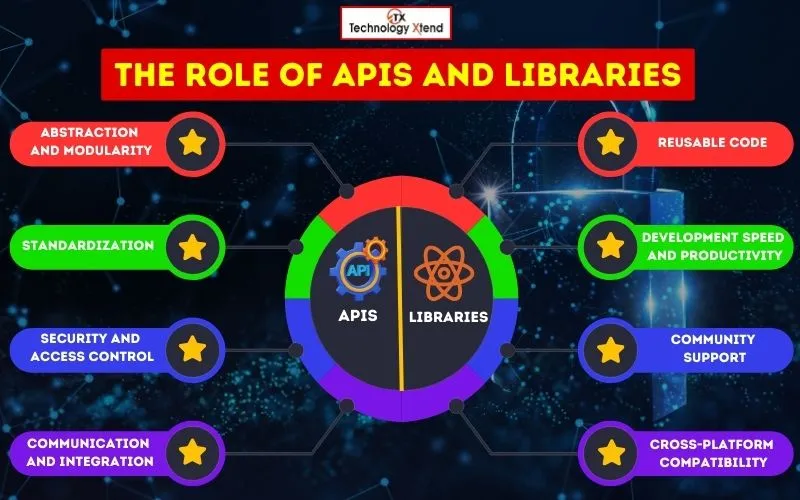
Technology Xtend10 Experts Tips to Become a Web Developer Pro
Unveiling the hidden gems: Discover the top 10 expert tips that can skyrocket your web development skills!
Welcome to our blog post on becoming a Web Developer Pro! Are you ready to take your coding skills to the next level and become a master in web development? Look no further, because we have all the tips and tricks you need to become a pro in no time. Whether you are just starting out or looking to enhance your existing skills, this blog post will guide you through the world of web development and provide you with a roadmap to success. So, buckle up and get ready to unlock your full potential as we dive into the exciting world of web development.
“Unlocking the hidden secrets of web development can propel you towards greatness. Discover the insider tips and tricks in this must-read blog post to transform into a web development pro!”
The Essential Tools for Web Development

Integrated Development Environments (IDEs)
Integrated Development Environments (IDEs) play a crucial role in the efficient and streamlined workflow of developers. They provide a centralized platform where programmers can write, test, debug, and deploy their code. With features tailored specifically for coding, IDEs significantly enhance productivity and efficiency by automating various tasks and simplifying the development process.
Some popular IDE choices include Visual Studio, Eclipse, and IntelliJ IDEA, each offering a unique set of features. Visual Studio, developed by Microsoft, is highly acclaimed for its extensive debugging capabilities, code refactoring options, and seamless integration with the vast array of Microsoft tools. Eclipse, on the other hand, offers a highly modular and customizable framework, making it a preferred choice for Java development. Additionally, IntelliJ IDEA, known for its intelligent code completion and code analysis features, caters to a broad range of programming languages.
IDEs also provide functionality to manage project files, version control integration, and real-time collaboration, thus promoting collaboration and ensuring code consistency within development teams. Moreover, they offer features such as syntax highlighting, code suggestions, and intelligent error detection, which significantly reduce the occurrence of coding errors and enhance code quality. In summary, IDEs are indispensable tools for developers, encompassing a wide range of functionalities that facilitate code development, increase efficiency, and elevate the overall software development experience.
Version Control Systems (VCS)
Version Control Systems (VCS) play a crucial role in managing and tracking changes to software code. In the world of web development, where multiple developers often collaborate on projects, the need for a reliable and efficient version control system becomes even more apparent. VCS allows developers to keep track of revisions, revert to previous versions, and work on different branches simultaneously.
It ensures that changes made by different team members can be easily integrated and conflicts can be resolved efficiently. Examples of widely used VCS include Git, Subversion (SVN), and Mercurial. Git, known for its speed and distributed nature, has gained immense popularity due to its support for offline work and its seamless merging capabilities. SVN, with its centralized approach and strong community support, remains a favored choice for many organizations. Mercurial, similar to Git but known for its ease of use, provides a user-friendly interface for version control.
These VCS offer benefits such as improved collaboration, enhanced productivity, and the ability to roll back to earlier versions in case of bugs or issues. Overall, version control systems have become an indispensable tool for web developers, enabling efficient project management and ensuring the integrity and stability of code repositories.
Package Managers
Package managers are a fundamental tool in the development scene, simplifying the process of managing software dependencies. They provide a centralized repository of packages, libraries, and frameworks that can be easily installed and updated. With the support of package managers, developers no longer need to spend time manually searching for and downloading dependencies, as package managers handle this automatically. This not only saves time and effort but also ensures that dependencies are up-to-date and compatible with each other.
Popular package managers in the development scene include npm for JavaScript, pip for Python, and Composer for PHP. These package managers offer a vast selection of packages, making it easier for developers to integrate external code into their projects. For web development, leveraging package managers can streamline the process by providing ready-to-use libraries and frameworks, enabling developers to quickly build and deploy websites and web applications. Alongside other development tools and workflows, package managers have become an essential component in the modern development ecosystem.
Task Runners
Task runners are powerful tools that allow users to automate repetitive tasks, providing a more efficient and streamlined workflow. With the ability to execute multiple actions with just a simple command, task runners are essential tools for developers and IT professionals.
These tools offer a wide range of key features that enhance productivity and save time. For instance, they allow for task modularization, where complex tasks can be broken down into smaller, more manageable units. Additionally, task runners enable task dependency management, ensuring that tasks are executed in the correct order based on their dependencies. They also offer the flexibility to handle various file formats, allowing users to perform actions on specific files or directories.
In real-world scenarios, the impact of task runners is evident. They can be used to compile code, optimize images, concatenate files, and much more, creating automated workflows that significantly reduce manual effort and increase productivity. Overall, task runners are an essential tool for automating repetitive tasks and enhancing efficiency in various industries.
Debugging Tools
Debugging is an essential aspect of web development as it helps identify and rectify errors that may occur during the coding process. Effective debugging significantly impacts the overall quality and functionality of a website, ensuring it operates flawlessly. To achieve this, developers rely on powerful debugging tools that assist in locating and fixing bugs efficiently. These tools provide valuable insights into code execution, memory usage, and performance analysis, enabling developers to streamline their debugging process.
Real-time debugging examples and success stories demonstrate the effectiveness of these tools, showcasing how they have helped developers identify and resolve complex issues, leading to improved website performance and enhanced user experience. Overall, debugging tools play a crucial role in the web development process, enabling developers to create and maintain high-quality websites.
Also Read - From Page 10 To Page 1: Dominate Google Rankings
The Emergence of Modern Frameworks
Frontend Frameworks
Front-end frameworks have become increasingly popular in the field of web development due to their ability to streamline the process of building user interfaces. Some of the most well-known frameworks include React, Angular, and Vue.js. These frameworks offer a range of tools and components that allow developers to easily create interactive and responsive websites. React, for example, utilizes a component-based architecture and virtual DOM, making it highly efficient for rendering large amounts of data. Angular, on the other hand, provides a fully featured framework with comprehensive support for building complex web applications. Lastly, Vue.js is known for its simplicity and ease of integration, making it a popular choice for smaller projects.
The use of front-end frameworks comes with several advantages and challenges. One major advantage is the increased productivity it offers to developers. By providing pre-built components and libraries, frameworks eliminate the need to write code from scratch, saving time and effort. This also promotes code reusability and maintainability, as components can be easily reused across different projects. Additionally, frameworks often come with comprehensive documentation and a large community, providing developers with a wealth of resources and support. However, utilizing front-end frameworks also presents some challenges. One common challenge is the learning curve associated with each framework. As frameworks evolve and introduce new features, developers need to stay up-to-date with the latest changes and conventions. Another challenge is the potential dependency on the framework itself. As frameworks update, there may be compatibility issues that require developers to make adjustments to their codebase. Lastly, some front-end frameworks can introduce performance issues if not optimized correctly, leading to slower load times and decreased user experience.
Numerous real-world applications have been built using front-end frameworks. For example, Airbnb, a popular online marketplace for vacation rentals, utilizes React for their frontend development. React allows Airbnb to create a seamless and interactive user experience while efficiently handling a large amount of data. Facebook, the social media giant, also heavily relies on React for its frontend development. React's component-based architecture allows for easy scalability and code maintenance, making it a suitable choice for such a large-scale web application. Angular has been utilized by Google for their web applications such as Google Ads, Google Analytics, and Google Cloud Platform. Angular's comprehensive features and strong community support make it an ideal choice for complex web applications that require robust functionality and ease of development. Lastly, Vue.js has gained popularity in recent years and has been adopted by companies like Xiaomi, Alibaba, and Adobe. Companies choose Vue.js to build their real-world applications due to its simplicity, elegant design, and ease of integration with existing projects. In conclusion, front-end frameworks have revolutionized the way websites and web applications are developed, offering increased productivity and streamlined development processes. With their numerous advantages and challenges, these frameworks have found their place in the development community and continue to be used in a wide range of real-world applications.
Backend Frameworks
Exploring the world of backend frameworks Backend frameworks have become an integral part of modern web development, revolutionizing the way developers build robust and dynamic websites. These frameworks provide a solid foundation for handling server-side operations, enabling developers to focus on creating efficient and feature-rich web applications. With a plethora of backend frameworks available in the market, developers have the opportunity to select one that matches their needs and preferences. From popular options like Ruby on Rails, Django, and Laravel to niche frameworks like Express.js and Flask, the world of backend frameworks offers a diverse range of tools to streamline web development processes.
The utilization of backend frameworks has greatly contributed to the efficiency and effectiveness of web development projects. One of the key benefits is the significant reduction in development time and effort. Backend frameworks provide pre-built modules and libraries, allowing developers to concentrate on the core functionality of their web applications rather than reinventing the wheel. Furthermore, these frameworks enable the implementation of best practices and adhere to established coding standards, ensuring the development of highly maintainable and scalable web applications. Additionally, backend frameworks offer robust security features and handle common tasks such as URL routing, session management, and database integration, thereby freeing up developers' time to focus on building innovative features and functionalities.
A number of notable web applications owe their success and functionality to backend frameworks. For instance, Instagram, one of the most popular social media platforms, is built using Django, a high-level Python web framework. Django's clean and pragmatic design has enabled Instagram to handle massive amounts of user-generated content and provide a seamless user experience. On a similar note, Airbnb, the well-known online marketplace, harnesses Ruby on Rails to power its backend infrastructure. The Rails framework has facilitated the development of Airbnb's complex features, such as search algorithms and secure payment systems, while maintaining a high level of performance and scalability. Another exemplary application is Spotify, which relies on the backend framework known as Hadoop to handle its vast amount of music data, ensuring efficient storage, retrieval, and processing. These examples highlight the versatility and power of backend frameworks in enabling the creation of successful and feature-rich web applications that meet the demands of today's digital landscape.
Also Read - The Art Of Web Design: How To Stand Out In A Digital Crowd
The Role of APIs and Libraries
APIs Integration
APIs, or Application Programming Interfaces, play a crucial role in the world of web development. They serve as a bridge between different software applications, allowing them to communicate and exchange data effectively. APIs have become an essential component of modern web development, facilitating the seamless integration of various services and functionalities.

By leveraging third-party APIs, developers can enhance their projects with features that may have been otherwise time-consuming or complex to implement. These APIs provide ready-made solutions for common tasks, such as integrating payment gateways, social media sharing, or even embedding maps and weather information. This integration not only saves development time but also helps create more robust and feature-rich web applications.
Successful use cases of API integration can be seen in various domains, such as e-commerce, finance, and social media. For instance,
- e-commerce platforms extensively use APIs to enable secure payments, track shipments, and manage inventory.
- financial institutions rely on banking APIs to enable seamless integration with their customers' banking systems, delivering real-time financial information.
- Social media platforms provide APIs that empower developers to integrate features like login with social media accounts, posting updates, or fetching profile information.
By effectively harnessing the capabilities of APIs, web developers can create powerful and versatile applications that cater to the specific needs of their users.
Reusable Libraries
Reusable libraries offer numerous advantages in the field of software development. By utilizing pre-existing, well-tested code, developers can save valuable time and effort, focusing on higher-level tasks. These libraries help streamline the development process by providing ready-made solutions to common problems, reducing the need for reinventing the wheel.
In the realm of web development, both front-end and backend libraries play a crucial role. For front-end development, popular libraries such as React and Angular provide efficient ways to build user interfaces, enhancing the user experience. On the backend, libraries like Express and Django offer robust frameworks to handle routing and request handling, making server-side development more efficient.
Real-life examples of libraries contributing to efficient web development can be seen in large-scale projects such as Facebook, where React is extensively used, or Instagram, which relies on Django. These libraries not only simplify the development process, but also help ensure code reusability, maintainability, and scalability over time.
Also Read - The Art Of Logo Designing: Unleash Your Creative Potential
Keeping Up with the Trends: Continuous Learning and Skill Enhancement
Keeping up with the ever-evolving trends and demands in the field of web development is crucial for professionals seeking to advance their careers and become true experts in the field. Continuous learning and skill enhancement are not just optional, but essential, in order to stay competitive in an industry that is constantly changing. To become a web developer pro, individuals must stay up-to-date with the latest programming languages, frameworks, and techniques that are being adopted in the industry. This requires dedicating time and effort to learning new concepts, attending workshops and conferences, and actively participating in online communities and forums. Moreover, having a curious and inquisitive mindset is vital, as it allows web developers to analyze and understand emerging trends, and adapt them to their own projects and workflows. By embracing a continuous learning approach and consistently enhancing their skills, web developers can ensure their expertise remains current and sought after in an increasingly competitive job market.
Also Read - Explore – Latest Technology Trends in Education
Conclusion
Related Articles









































